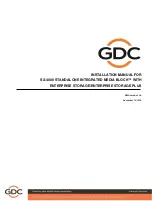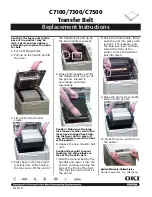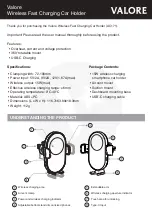
3
ET SySTEm COmpONENTS ...................................................................................................................
SySTEm OvErvIEw ANd ET SySTEm OpErATION .........................................................................
ET System has two major components, and one optional accessory. All
ET System components are low voltage (24 VAC or less).
A. ET Sensor
Sensor platform wired to the ET Module, which senses local
conditions. For external mounting up to 100 ft/33m from the Mod-
ule. Pole adapters included (requires other hardware for various
mounting options).
B. ET Module
Electronic control and user interface for the ET System.
The ET System can be simply and easily installed with any Hunter
SmartPort®-equipped irrigation controller. The System consists of the
ET Sensor, installed in an area typical of the irrigated plants, and the
ET Module interface enclosure, installed next to the irrigation control-
ler.
The ET Sensor measures solar radiation, air temperature, and relative
humidity, and calculates the daily Evapotranspiration factor (ET) for
the irrigation zones. This represents the amount of water lost by the
plants to local climatic conditions, which needs to be replaced by
irrigation.
The optional ET Wind sensor will add evapotranspiration loss due to
wind, along with automatic wind shutdown capability.
The ET Sensor also includes a Rain Gauge, which measures rainfall in
either hundredths of an inch, or in millimeters.
Rainfall will stop automatic ET irrigation that may be in progress. A
percentage of the rainfall itself will be added to the soil and subtracted
automatically from the automatic irrigation, to prevent waste.
The ET Module receives the data from the ET Sensor, and applies it
to the individual zones of irrigation. The ET Module has settings to
customize each zone’s plant, soil, and sprinkler types, so that ET data
can be applied proportionately for each unique irrigation requirement.
The ET Module is wired into the controller’s SmartPort and creates
irrigation run times to only replace the amount of water the plants
have lost.
ET Module works by running stations through the local controller. It
will clear Program A in the local controller (except in ACC controllers),
and it will then run the ET run times with manual commands. Program
A is no longer available for "traditional" irrigation scheduling.
How ET System Decides to Water:
Using the local ET Sensor readings
and the ET Module’s database of station information, ET System pre-
dicts the Management Allowable Depletion of water (MAD) available to
each plant type.
Each day, ET System looks at the current depletion level, ET rate,
plant type (crop coefficient and root zone), and whether the next day
is an allowable watering day. The decision to start a specific station
is also based upon a minimum irrigation amount, to prevent shallow
watering. Deeper watering events encourage healthy root systems and
plant growth. The calculation for minimum sprinkler runtime is based
upon the soil type and capacity, where typically the MAD is above
30-50%. For the worst-case scenario, sandy soil with spray heads, the
minimum runtime would then be approximately 7 minutes.
C. ET Wind (Optional)
Optional anemometer which senses wind speed. Provides more
sensitive ET measurement, especially in arid climates.
D. ET/ACC Adapter (Included)
For connection with ACC series controllers. The adapter is not
required for use with Hunter ICC, Pro-C, and SRC family
controllers.
E. ET Wire
100' (33mm) two-conductor direct burial for connection to ET
Sensor
Содержание ET System
Страница 4: ...D 2 A B C E ...






































